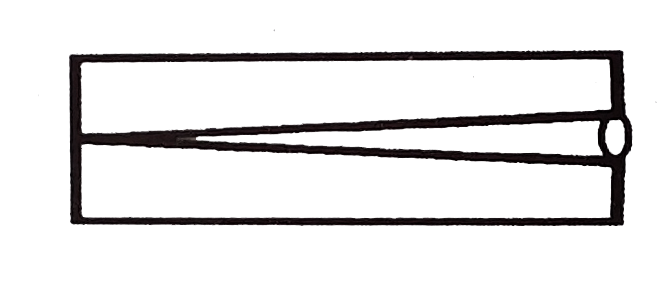A broad sources of light of wavelength 680nm illuminated normally two glass plates.120nmlong that meet at one end and are separated by a wire0.048mmin diameter at the other end,Find the number of bright fringes formed over the 120nmdistance.

The correct Answer is:[141]
Step by step video, text & image solution for A broad sources of light of wavelength 680nm illuminated normally two glass plates.120nmlong that meet at one end and are separated by a wire0.048 mmin diameter at the other end,Find the number of bright fringes formed over the 120nmdistance. by Physics experts to help you in doubts & scoring excellent marks in Class 12 exams.
Updated on:21/07/2023Topper's Solved these Questions
- WAVE OPTICSBOOK - PHYSICS GALAXY - ASHISH ARORACHAPTER - WAVE OPTICSEXERCISE - Advance MCQs with One or More Options Correct
27 Videos
- THERMODYNAMICS LAWS & SPECIFIC HEATS OF GASES BOOK - PHYSICS GALAXY - ASHISH ARORACHAPTER - THERMODYNAMICS LAWS & SPECIFIC HEATS OF GASES EXERCISE - Practice Exercise 3.4
11 Videos
- WAVES BOOK - PHYSICS GALAXY - ASHISH ARORACHAPTER - WAVES EXERCISE - Unsolved Numerical Problems for Preparation of NSE, INPhO & IPhO
135 Videos
Similar Questions
A beam of light of wavelength 600 nm from a distant source falls on a single slit 1.0 mm wide and the resulting diffraction pattern is observed on a screen 2 m away What is the distance between the second bright fringe on either side of the central bright fringe ?
View SolutionA beam of light of wavelength 600 nm from a distance source falls on a single slit 1 mm wide and resulting diffraction pattern is observed on a screen 2m away. What is the distance between the first bright fringes on either side of the central bright fringe ?
View Solution
Knowledge Check
_E01_041_Q01.png)
Light wavelength 650 nm is incident normally upon a glass plate the glass plate rests on top of second plate so that hey touch at one end and are separated by 0.0325 mm at the other end as shown in the figure. Which range of values contains the horizontal separation between adjacent bright fringes?A1.1 mm to 1.4 mmB1.4 mm to 2.8 mmC2.8 mm to 4.2 mmD4.2 mm to 5.6 mmIn Yonung's double-slit experiment, two slits which are separated by 1.2 mm are illuminated with a monochromatic light of wavelength 6000Å The interference pattern is observed on a screen placed at a distance of 1 m from the slits. Find the number of bright fringes formed over 1 cm width on the screen.
A25B12C15D20A beam of light of wavelength 600 nm from a distant source falls normally on a single-slit, 1 mm wide, and the resulting diffraction pattern is obtained on a screen 2.0 away. The distance between the first dark fringes on either side of the central bright fringe is
A1.2 mmB1.2 cmC2.4 cmD2.4 mm
A beam of light of wavelength 600 nm from a distant source
falls on a single slit 1.0 mm wide and the resulting diffraction pattern is
observed on a screen 2m away. What is the distance between the first dark
fringe on either side of the central bright fringe?
View SolutionA beam of light of wavelength 600nm from a distance source falls on a single slit 1.00mm side and the resulting diffraction pattern is observed on a screen 2m away. The distance between the first dark frings on either side of the central bright fringe is
View SolutionA beam of light of wavelength 600nm from a distance source falls on a single slit 1mm wide and a resulting diffraction pattern is observed on a screen 2m away. The distance between the first dark frings on either side of central bright fringe is
View SolutionA beam of light of wavelength 600 nm from a distant source falls on a single slit 1 mm wide and the resulting diffraction pattern is observed on a screen 2 m away. The distance between the first dark fringes on either side of the central bright fringe is
View SolutionA beam of light of wavelength 600nm from a distant source falls on a single slit 1mm wide and the resulting diffraction pattern is observed on a screen 2m away. The distance between the first dark fringes on either side of the central bright fringe is
View Solution
